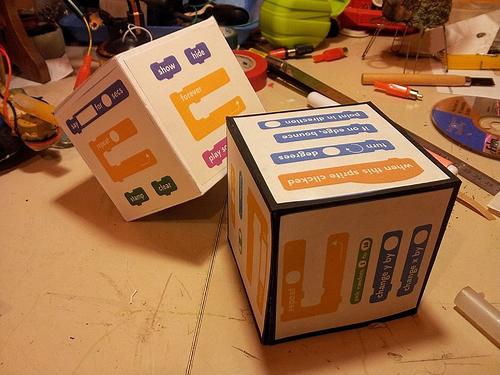Dice4Scratch are DIY dice; each face has four blocks code printed on it, for a max of 24 blocks
The idea is to use the dice for creating Scratch's challenges, using the blocks appearing after throwing.
Possible uses:
1) make three throws; you will obtain twelve blocks of code
2) use these 12 block for creating a project in 10 minutes
3) all block must be used, also more times
Would be better to have three dice to throw, as they can show at the same time the blocks to be used
I made two kind of die: Basic and Advanced for different skill's level
Face Template
here below the are two pdf file for Basic and Advanced dice. Feel free to use them or create your own template. The square's dimension is 8x8 cm. You have to print the file, cut the squares and glue them on the cube
Basic Template
Advanced Template
Cube Template
To build the dice you need
- card stock
- scissor
- pencil
- rulers
On the web you can find a lot of cube template for creating your dice with paper. Anyway I share below my template.
Pay attention: it is not in scale because, in my case, each face's size is 8x8 cm. You can draw the cube layout by hand, using the side size you wish: 8 cm in my case.
I invite you all to test these dice, and to experiment different ways to use them
Let us know your experiences in using Dice4Scratch.
Thanks



